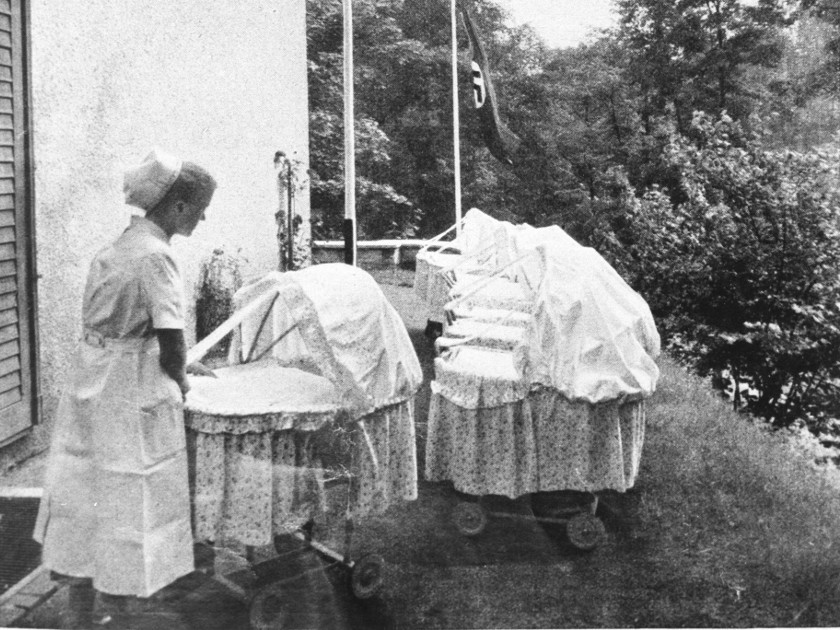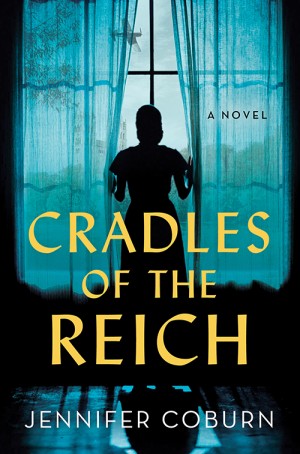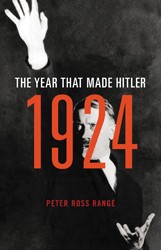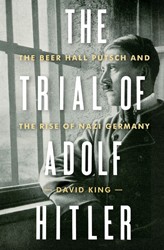
A Lebensborn birth house, 1943, German Federal Archives
Growing up in New York City in the 1970s, I listened to my father tell me how his family prepared for the looming threat of Adolf Hitler’s invasion of the United States. From their apartment in Brooklyn in the 1930s, my father’s family listened to radio news reports of the persecution of Jews overseas. They understood that the Nazis would never settle for control of Europe, that Hitler planned to come for our people in the United States.
The Kihls, my father’s family’s Christian German neighbors, offered to adopt my father, who was a toddler at the time. My aunt Bernice, a young teen, could pass as a non-Jew, so a Catholic church offered her a spot at a convent upstate where they planned to hide nine Jewish girls. Sadly, my aunt Rita, the middle child, had polio and walked with a limp, so even if righteous non-Jews wanted to help, there was no hope for her if Hitler invaded the United States.
From a young age, I understood that Hitler’s plan to create a so-called master race meant the genocide of the Jewish people. Only much later in life, I learned that the Nazis also had a secret breeding program to create two million children to populate the expanding Reich.
Heinrich Himmler launched the Lebensborn Society, which aimed to produce German children in three ways. The program began as a maternity home for unwed, German young women who met the Nazi criteria – no Jewish or Untermenchen (subhuman) blood for three generations, good mental and physical health, and certain facial structures and coloring. This progressed to the Nazis recruiting “racially valuable” women to have sex with SS officers. And finally, Nazi soldiers kidnapped blond-haired, blue-eyed infants and toddlers from countries Germany invaded, and brought them to the Fatherland for “Germanization.” In each case, the goal was for “good” German families to adopt these children. In the end, the Lebensborn Society bred 20,000 babies and stole 200,000, half from Poland alone.
I wondered why I hadn’t heard of the Lebensborn Society in any of my readings about the Shoah.
I wondered why I hadn’t heard of the Lebensborn Society in any of my readings about the Shoah. Although it involved non-Jewish women, the program was part of a larger eugenics movement that viewed the Jewish people as a problem that needed to be eradicated.
The Lebensborn Society was a puzzle piece missing from my overall understanding of a tragic period. I felt compelled to dig in and study the program, but I also grappled with some guilt about it. With so many compelling and important stories about victims and survivors, shouldn’t I explore material that centers them? Why study Nazis?
If I hadn’t asked myself these questions, I could always count on my mother to do so. “You’re researching Nazis?” she cried over the phone. “Why should we care about them?”
My mother was right, but I also believe that part of never forgetting about the Holocaust is examining antisemitism, so we can recognize its early warning signs. I spent the next couple of years researching the Lebensborn Society, a program that promoted Aryan superiority by weaponizing fertility and childbirth.
The breeding aspect of the program was voluntary, so the question I struggled with was why young women eagerly forfeited control of their own bodies. To better understand that, I needed to zoom out and take a look at the broader Nazi culture. Most of us know that Hitler rose to power by promising a return to German strength after its humiliating loss in World War I. One of the ways to achieve this, according to the Nazis, was through conformity and homogeny. And there was the call to demonstrate patriotism through blind obedience to the Führer.
What I hadn’t known before researching the Lebensborn Society was that the German birth rate had been declining. Additionally, the Reich was “reclaiming” territory it lost in World War I, so it needed more people to populate these regions.
One of the first steps in convincing young women to have a “child for Hitler,” as they called it, was to make large families the societal norm. Outside the program, married women with four or more healthy children were depicted as “child-rich” and awarded the Mutterkreuz (the Mother Cross) service medal. Women who birthed or adopted four or five healthy children received a bronze medal; mothers of six and seven received silver; eight or more children earned a gold Mutterkreuz.
Though fascinated, I wrestled with more guilt. Why even think about Nazis and their plan to produce babies? As a Jewish person, shouldn’t I focus on survivors like Dr. Edith Eger, who survived Auschwitz by dancing for Dr. Mengele? Why not research heroes like Witold Pilecki, who infiltrated Auschwitz to organize a resistance movement? I have read Dr. Eger’s moving memoir The Choice and Jack Fairweather’s inspiring account of Pilecki’s work in The Volunteer. We should – and indeed, must – read about Jewish survival and liberation.
In reading Martha Hall Kelly’s The Lilac Girls and Louise Fein’s Daughters of the Reich, though, I realized that there is also great insight to be gained from delving into the warped psyche of characters who were seduced by Hitler. To understand one’s enemy is to be better equipped to defend against him.
Stories about the survivors, heroes, and victims of the Shoah must remain at the center of the discussion about this dark period of Jewish history. There is also something to learn through Jewish literature that examines the villains and bystanders of the Holocaust.
Jennifer Coburn is the author of historical novels about the strength of women’s friendship and the connections that can be forged during even the most harrowing of times. Jennifer has published articles about reproductive rights, racial justice, and family relationships in newspapers and magazines, including The Washington Post, Miami Herald, The Philadelphia Inquirer, and San Diego Magazine.



